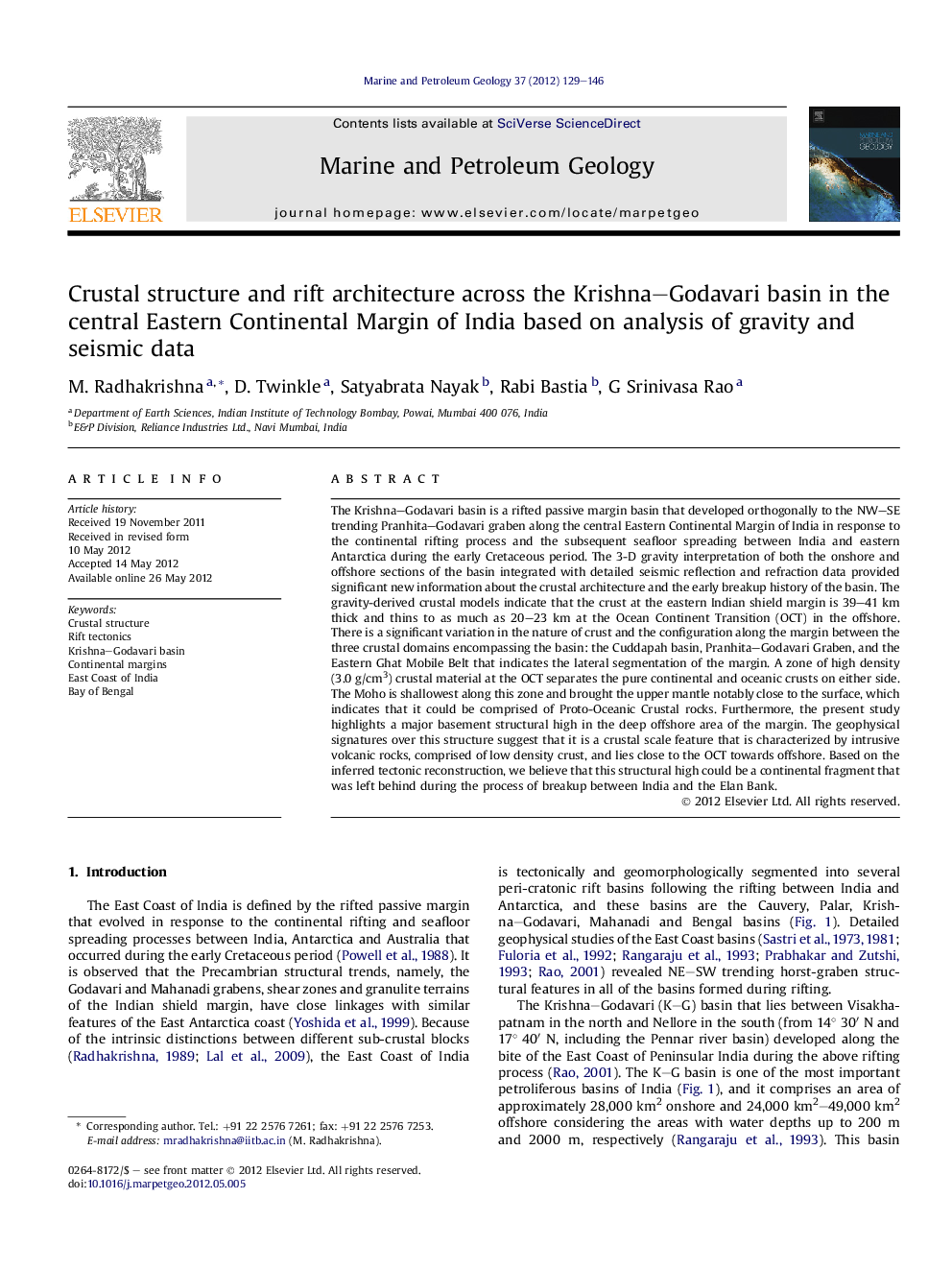| کد مقاله | کد نشریه | سال انتشار | مقاله انگلیسی | نسخه تمام متن |
|---|---|---|---|---|
| 4695911 | 1351642 | 2012 | 18 صفحه PDF | دانلود رایگان |

The Krishna–Godavari basin is a rifted passive margin basin that developed orthogonally to the NW–SE trending Pranhita–Godavari graben along the central Eastern Continental Margin of India in response to the continental rifting process and the subsequent seafloor spreading between India and eastern Antarctica during the early Cretaceous period. The 3-D gravity interpretation of both the onshore and offshore sections of the basin integrated with detailed seismic reflection and refraction data provided significant new information about the crustal architecture and the early breakup history of the basin. The gravity-derived crustal models indicate that the crust at the eastern Indian shield margin is 39–41 km thick and thins to as much as 20–23 km at the Ocean Continent Transition (OCT) in the offshore. There is a significant variation in the nature of crust and the configuration along the margin between the three crustal domains encompassing the basin: the Cuddapah basin, Pranhita–Godavari Graben, and the Eastern Ghat Mobile Belt that indicates the lateral segmentation of the margin. A zone of high density (3.0 g/cm3) crustal material at the OCT separates the pure continental and oceanic crusts on either side. The Moho is shallowest along this zone and brought the upper mantle notably close to the surface, which indicates that it could be comprised of Proto-Oceanic Crustal rocks. Furthermore, the present study highlights a major basement structural high in the deep offshore area of the margin. The geophysical signatures over this structure suggest that it is a crustal scale feature that is characterized by intrusive volcanic rocks, comprised of low density crust, and lies close to the OCT towards offshore. Based on the inferred tectonic reconstruction, we believe that this structural high could be a continental fragment that was left behind during the process of breakup between India and the Elan Bank.
► Significant variation in crustal structure along the margin indicates lateral segmentation of K–G basin during breakup.
► Study reveals emplacement of high density proto-oceanic crustal rocks along the continent-ocean transition.
► Basement high in the deep offshore K–G basin is the continental fragment formed during the breakup of Elan Bank from India.
Journal: Marine and Petroleum Geology - Volume 37, Issue 1, November 2012, Pages 129–146